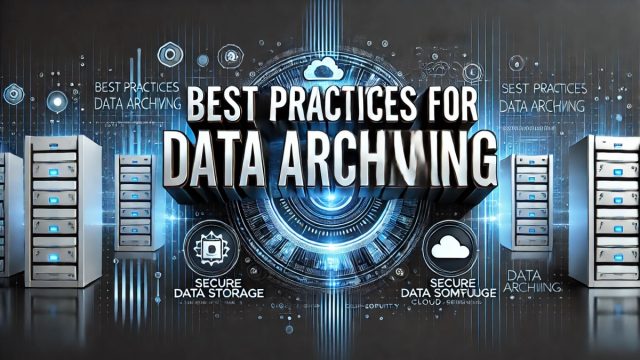Data is the backbone of modern businesses and technology. From critical files to historical records, organizations generate massive amounts of digital information every day. Without a proper archiving strategy, data can become disorganized, lost, or even compromised.
A strong data archiving plan ensures long-term accessibility, security, and efficiency. Let’s explore the best practices to keep your data structured and protected.
Understand the Difference Between Archiving and Backup
Contents [show]
Many people confuse data archiving with data backup. While both involve storing information, they serve different purposes.
- Backups create copies of active data for quick recovery in case of system failures.
- Archives store older, infrequently used data while keeping it accessible when needed.
Knowing this distinction helps organizations allocate storage resources effectively.
Classify Data Before Archiving
Not all data needs to be archived. Sorting information based on relevance, importance, and legal requirements prevents unnecessary storage use.
Develop a classification system that distinguishes:
- Critical business data – Financial records, customer information, and legal documents.
- Reference materials – Old reports, past projects, and completed contracts.
- Obsolete data – Files that are no longer useful and can be deleted.
Organizing data before archiving streamlines retrieval and saves costs.
Select the Right Storage Solution
Choosing the right storage medium is crucial. Different options suit different needs.
- Cloud-based archives – Scalable and easily accessible from anywhere. Ideal for businesses with remote operations.
- On-premise storage – Offers control and security. Works well for organizations handling sensitive data.
- Tape storage – A cost-effective solution for long-term, high-volume archiving.
- Hybrid storage – A mix of cloud and local storage for balance between accessibility and security.
The best choice depends on budget, data sensitivity, and access requirements.
Establish Data Retention Policies
Every organization should define how long data should be archived before it’s deleted or moved. Retention policies ensure compliance with regulations while optimizing storage space.
Set clear guidelines for:
- Short-term archives – Data that may be needed in the next 1-3 years.
- Long-term archives – Information required for regulatory compliance or historical reference.
- Data disposal – When and how outdated files should be permanently removed.
Regularly reviewing these policies keeps archives efficient and up to date.
Prioritize Security and Compliance
Data archiving isn’t just about storage—it’s about protection. Cyber threats, unauthorized access, and compliance violations can cause serious problems.
To safeguard archived data:
- Encrypt sensitive information to prevent unauthorized access.
- Implement role-based access to limit who can retrieve archived files.
- Use secure transfer protocols when moving data to and from archives.
- Follow industry regulations such as GDPR, HIPAA, or SOC 2, depending on your field.
Security should never be an afterthought in data archiving.
Ensure Fast and Easy Retrieval
Archived data should be accessible when needed. Without an efficient retrieval system, valuable information can get buried.
Improve retrieval speed with:
- Metadata tagging – Assign relevant keywords to archived files.
- Indexing tools – Use AI-powered or automated search systems.
- User-friendly interfaces – Ensure employees can retrieve data without IT assistance.
A slow archive defeats its purpose. Accessibility should always be a priority.
Automate the Archiving Process
Manual archiving is time-consuming and prone to errors. Automation simplifies data movement, classification, and storage.
Many modern archiving solutions include:
- Automated data classification based on usage patterns.
- Scheduled archiving to transfer inactive files at regular intervals.
- AI-driven organization for smarter storage management.
Investing in automation reduces human error and improves efficiency.
Keep Your Archive Future-Ready
Technology evolves, and so should your archiving strategy. A system that works today may become obsolete in a few years.
Future-proof your archives by:
- Choosing scalable storage solutions that can grow with your data.
- Regularly updating security protocols to counter evolving threats.
- Testing recovery processes to ensure archives remain intact over time.
A forward-thinking approach keeps your data protected and accessible for years to come.
Smart Archiving Leads to Smarter Operations
A well-organized archive is more than just a storage solution—it’s a strategic asset. With the right practices, businesses can enhance security, reduce costs, and maintain compliance with industry regulations.
Implementing these best practices ensures your data remains an asset, not a liability.


